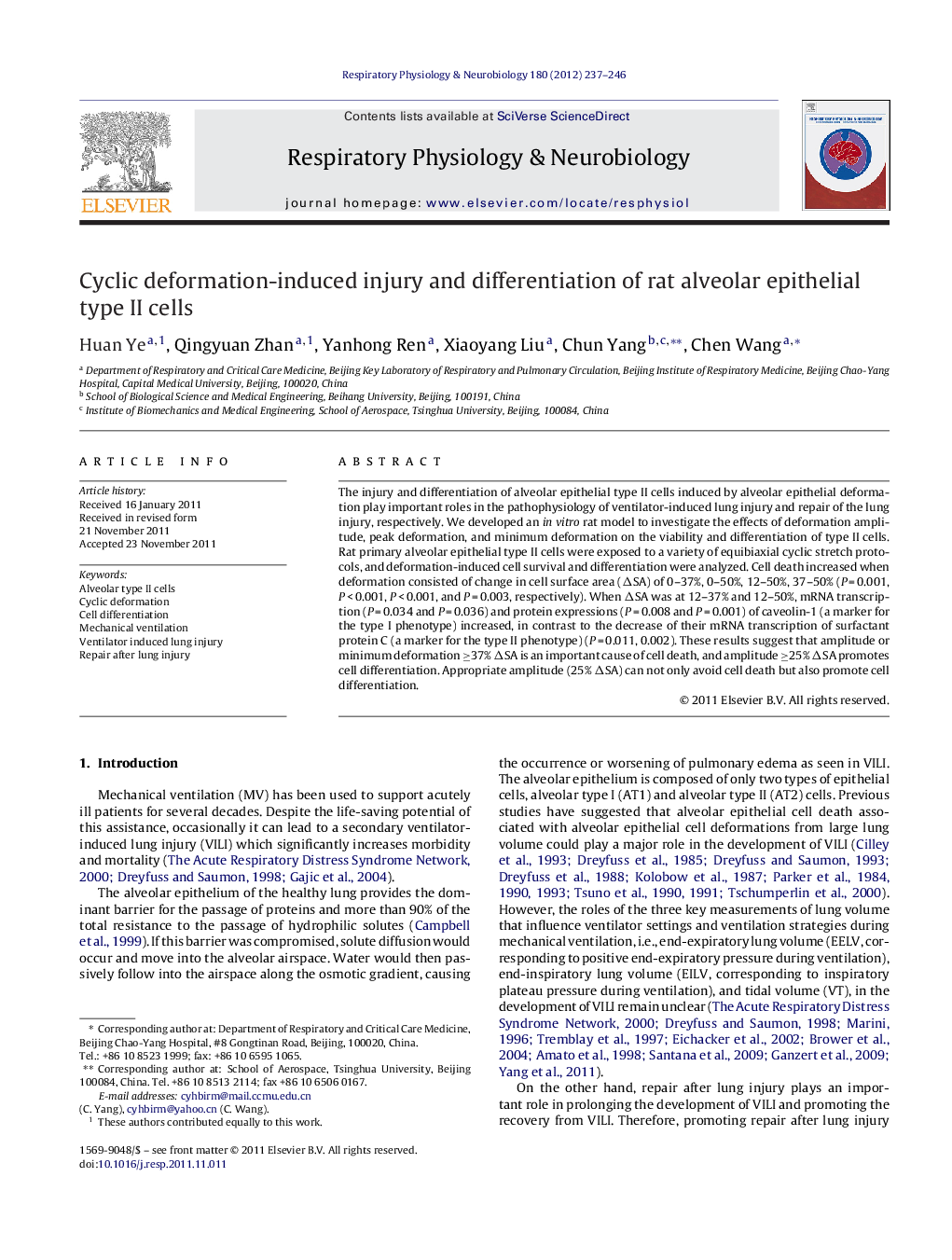| Article ID | Journal | Published Year | Pages | File Type |
|---|---|---|---|---|
| 5926334 | Respiratory Physiology & Neurobiology | 2012 | 10 Pages |
The injury and differentiation of alveolar epithelial type II cells induced by alveolar epithelial deformation play important roles in the pathophysiology of ventilator-induced lung injury and repair of the lung injury, respectively. We developed an in vitro rat model to investigate the effects of deformation amplitude, peak deformation, and minimum deformation on the viability and differentiation of type II cells. Rat primary alveolar epithelial type II cells were exposed to a variety of equibiaxial cyclic stretch protocols, and deformation-induced cell survival and differentiation were analyzed. Cell death increased when deformation consisted of change in cell surface area (ÎSA) of 0-37%, 0-50%, 12-50%, 37-50% (P = 0.001, P < 0.001, P < 0.001, and P = 0.003, respectively). When ÎSA was at 12-37% and 12-50%, mRNA transcription (P = 0.034 and P = 0.036) and protein expressions (P = 0.008 and P = 0.001) of caveolin-1 (a marker for the type I phenotype) increased, in contrast to the decrease of their mRNA transcription of surfactant protein C (a marker for the type II phenotype) (P = 0.011, 0.002). These results suggest that amplitude or minimum deformation â¥37% ÎSA is an important cause of cell death, and amplitude â¥25% ÎSA promotes cell differentiation. Appropriate amplitude (25% ÎSA) can not only avoid cell death but also promote cell differentiation.
⺠We developed an in vitro rat model to investigate the effects of cyclic deformation on the viability and differentiation of type II cells. ⺠Large deformation amplitude or high minimum deformations are important cause of cell death. ⺠Large deformation amplitude promotes cell differentiation. ⺠Appropriate amplitude can not only avoid cell death but also promote differentiation.
